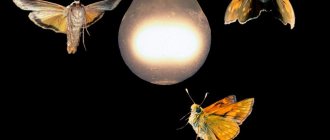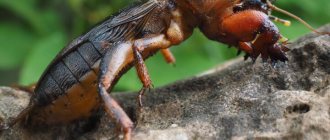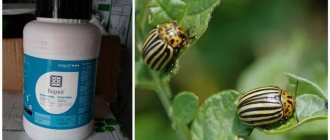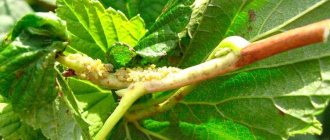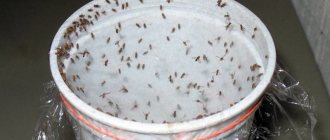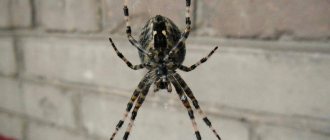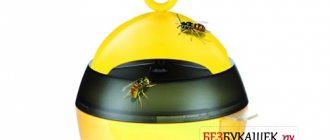Hello DIYers and gardeners, especially those who like to experiment with growing plants or pest control! Today I want to share one, in my opinion, very interesting and original way of combating one of the most serious pests of cabbage - white butterflies. More precisely, we are not talking about fighting, but about scaring away these pests. I recently learned about this method from the Internet.
In general, it must be said that white butterflies are one of the most malicious pests of cabbage, since they lay eggs on cabbage, from which greenish-yellow caterpillars then hatch. Immediately after hatching, these caterpillars begin to eat cabbage leaves at a very fast pace, so much so that they can completely destroy the entire cabbage harvest.
It is very difficult to fight them. Hand collection of these caterpillars often does not give reliable results, since the caterpillars penetrate deep into the leaves of the cabbage head. Poisoning them with chemicals is also undesirable, since we ourselves will then eat this cabbage.
You can, however, cover cabbage plantings with a fine-mesh plastic net so that butterflies cannot land on it and lay eggs at all. However, this method is bad in that due to the constant care of cabbage (weeding, weed removal, watering, fertilizing, etc.), such a net will need to be removed periodically. And recently, from the Internet, I learned about one very original way to combat white butterflies. The essence of this method is that thin, low pegs are installed on cabbage beds, onto which objects made of small white plastic are placed. We are talking about small plastic cups, drink caps, etc. Moreover, you can even use empty white egg shells.
So, it is believed that white butterflies, seeing white plastic objects, mistake them for their colleagues - butterflies and think that this place is already occupied. Therefore, they no longer try to lay eggs in this bed, but fly away to look for another - a free cabbage bed.
To be honest, this method does not inspire much confidence. However, it is worth recognizing that if this method really works, then it is perhaps the most original, simple and inexpensive way to combat white butterflies. Therefore, be that as it may, I decided to conduct an experiment and try this method on my site. Moreover, for greater efficiency, I will slightly refine this method in terms of making artificial plastic butterflies look as much like real ones as possible.
To imitate butterflies, I decided to use these plastic lids from cardboard milk cartons. Moreover, in size, they are just right.
What is special material protection?
Cabbage has a lot of pests , and each type of vegetable has its own characteristic lovers of leaves and roots. The main ones include:
- butterfly caterpillars;
- aphids;
- cabbage fly;
- cruciferous flea beetles;
- slugs;
- snails;
- thrips.
They can be dealt with both by folk methods and by means of chemical protection, but it is better to cover the beds with special material immediately after planting the seedlings. This is both more practical and cheaper. And most importantly, it saves you from almost all pests.
Covering materials have different thicknesses, they are quite durable. Thin ones are placed directly on the plants, while heavier ones require a frame. Cabbage can remain under such protection until harvesting.
Botanical description of the pest
The pest belongs to the white butterfly family. The external features of the small insect are as follows:
- Body structure: dark body, white wings with black spots. Size about 2–3 cm.
- The wingspan of females reaches 6 cm, while that of males is slightly smaller.
- Butterfly caterpillars are blue-greenish in color with three yellow stripes and black dots on the back.
- The 2.5 cm pupa is yellow-green in color and has gray-brown spots on it. It is entwined with a silky thread, with which it holds onto the leaf of the plant.
- The butterfly has well-developed visual organs, as well as a keen sense of smell. The front legs and club-like thickenings on the antennae serve as organs of touch.
Advantages and disadvantages
Advantages:
- Protection from insects and birds.
- The plant does not suffer from excessive heat or cold.
- Watering can be done from above without removing the cover. Moisture does not evaporate.
- The material allows sunlight to pass through, but at the same time protects against ultraviolet rays. Shades seedlings.
- Good air circulation.
- Saves from spring frosts. Depending on the density of the fabric, seedlings can withstand night temperatures down to -5°C.
- The ripening period of cabbage is reduced.
- Increased productivity.
- It can save you during a hurricane and even protect you from hail.
- Low price.
Flaws:
- According to some summer residents, there is some greenhouse effect. Therefore, sometimes you have to remove the cover for ventilation and watering.
- The need to install arches and frames.
- The material may be blown away or torn by strong winds.
What harm does cabbage beds cause?
The appearance of an uninvited guest on a cabbage plantation is fraught not only with the fact that the insect spoils the plant, but it also begins to destroy the moisture produced by the vegetable. Because of this, the cabbage stops growing and then dies completely.
In addition, the caterpillars leave their waste products on the leaves, which provokes infection of the plant. Rot, fungal and viral diseases appear on the crop, which quickly spread to neighboring plantings.
In order to prevent this phenomenon and save cabbage from the invasion of cabbage butterflies, it is necessary to immediately spray the planting with insecticides or use available means of combating a similar effect after detecting the pest.
What parasites will it help against?
All cabbage pests can be divided into groups:
- Soil - feed on roots and damage them (mole cricket, chafer larva and others).
- Ground - airborne (various butterflies, beetles, bugs, flies).
The first group of pests can be gotten rid of manually by digging up the beds in the fall and spring, as well as using various chemical compounds before planting seedlings.
Covering material will protect the seedlings from the second group of pests. Experts recommend using agrofibre , it has advantages over mesh and caps. This material protects cabbage from:
- The main enemy is the cabbage white moth, the larvae of which can destroy the entire crop.
- Clutch of butterflies (caterpillars).
- Cruciferous (cabbage) flea beetles.
- Cabbage fly.
- Cruciferous bugs.
- Slugs, snails, potato cutworm caterpillars. As vegetable growers say, if several specimens are found when opening the canvas, they can be easily collected by hand.
New types of nonwoven materials can protect cabbage from almost all types of ground and air pests. To do this, experts even conduct experiments using the same fiber, but in different colors. And it has been proven that yellow color attracts pests, distracting them from plants.
Types of pest butterflies
For all types of cabbage, including savoy, kale (grunkol) and decorative, the following butterflies are dangerous:
- Belyanka. The caterpillars appear 1-2 weeks after laying eggs, do not crawl away immediately and first eat the softest parts, and then the edges of the leaves.
- Repnitsa. It develops in the same way as the white grass, similar to it, but the caterpillars that appear in the summer penetrate the heads of cabbage, pollute them with waste from their vital activity, which leads to the appearance of rot.
- Cabbage fire. Summer begins in June–July. The caterpillars emerge 8-10 days after laying. At first, they eat the pulp of the leaves to holes, and, as they grow, they penetrate inside the budding head of cabbage and feed on young leaves.
- Scoop. Butterflies begin to fly in the second half of May, and the next generation begins in August. Caterpillars are active at night and live for about 1 month. Adults gnaw long tunnels in the heads of cabbage.
- Sawfly. The female prepares the site for laying by sawing through the surface of the leaf with her ovipositor at the end of May and in August. Sawfly larvae cannot eat only the rough veins.
- Cabbage moth. Appears at the end of April, its larvae gnaw through the leaf from below, crawl to its surface and feed on it for 2 weeks, and then pupate.
- Cabbage leaf beetle. Females look for a place to lay eggs in May and gnaw holes in the pulp of leaves. After 10 days, the larvae begin to feed on the upper layer of parenchyma, and later eat out large holes in them.
How and what to cover in the garden?
You should not use film to cover cabbage in hot weather. You need to choose a non-woven fabric, or also called agrofibre. The names may be different, depending on the manufacturer, but they are all made of polypropylene and look like regular fabric (Spunbond, Agrotex and others).
Attention!
Agrofibre has different densities, and the higher it is, the hotter it will be for the plants. This must be taken into account when purchasing. You need to choose depending on the weather conditions of the corresponding region.
Cabbage hats are also very popular. They are easy to use, made of agrofibre, put on a head of cabbage and protect against butterflies (caterpillars). Some particularly resourceful summer residents use medical caps.
What are cabbage cutworms and cabbage caterpillars?
Jacques Paganel would be happy if he came across a classic cabbage bed in the middle of summer (of course, there are very responsible vegetable growers, their clean beds are an example for everyone). Cabbage caterpillars are the larvae of small white and brown butterflies that flit around gardens during the day.
Cabbage caterpillars
He would find many pests on cabbage:
— “ Cabbage worms ” is a collective term denoting several types of cabbage pests, in our case the most significant:
- caterpillars of cabbage (Pieris brassicae), reptile (Pieris rapae) and rutabaga (Pieris napi);
- cutworm or looper (Trichoplusia Ni);
- cabbage webworm (Hellula undalis);
- cabbage moth (Plutella xylostella and cruciferarum).
White butterflies are often called "cabbage moths" and "cabbage moths", although in fact only plutella is a moth.
No scoop, looper
— Cabbage cutworm , owl's head, or cabbage moth (Mamestra brassicae, cabbage moth) is also a type of cabbage moth. Cabbage cutworm caterpillars enjoy not only cabbage, but also radishes, potatoes, beets, onions, peas, sunflowers, flowers and fruit trees.
As the name suggests, all cabbage caterpillars and cutworms are most attracted to the cabbage and cruciferous family: mustards, turnips and all types of cabbage. But, alas, cabbage caterpillars can be found on many other plants in the garden, including flowers.
Cabbage cutworm - moth and caterpillar
Both cabbage caterpillars and cabbage cutworms are controlled in the same way.
Step-by-step instructions: how to make it yourself and use it, photo of protection
Net
Fine mesh netting is an effective way to protect cabbage from pests. The bed is covered with it immediately after planting the seedlings and remains until harvest. Watering and fertilizing are carried out through the mesh. You need to make sure that the cabbage heads are not cramped; the cover relaxes and is added as the vegetable grows.
The mesh can be thrown over the cabbage without a frame, but it is better to make a structure using wooden beams, pipes, whatever is available. Depending on what size you want to get, hammer them at the appropriate distance from each other. An overlapping mesh is placed on top and secured to the posts with wire.
You can make supports inside and also drive them into the ground. A small structure can be easily built using arcs.
cap
It’s easy to sew a cabbage hat yourself. Lutrasil is good for this. You need to cut out a circle of the required size. We calculate it like this: the diameter of the finished cap is 25 cm, plus we leave about 5 cm for the hem, that is, the principle of a medical cap. We run a braid along the bottom.
The cap is carefully placed on the plant during the period of butterfly activity. A cabbage stem is tied with braid.
How to scare away whites
There are several ways to simulate the presence of competing butterflies in a cabbage patch. For this, small white objects are useful, which are placed in the garden bed or next to the cabbage plantings.
- Saving the harvest: 3 proven ways to protect seedlings from blackleg
Some gardeners use halves of eggshells, laying them on leaves and heads of cabbage or hanging them on thin pegs stuck in the ground. However, the light and fragile shell is blown away by the wind, and it is not so easy to secure it on pegs, so I use other materials to repel butterflies.
Clutches of white butterflies
I planted cauliflower and broccoli in the garden around the tenth of May. About 2 weeks ago I discovered clutches of whites on cabbage. I discovered it because I was looking: the white butterfly lays eggs on the underside of leaves, so they are difficult to notice and destroy in time.
Usually the pest is detected when small caterpillars crawl out of the eggs and begin to gnaw holes in the cabbage leaves. To prevent leaves from becoming holed, you should regularly inspect the undersides of leaves.
The clutch of white cabbage is a cluster of small yellow eggs that must be crushed immediately, because in warm weather the caterpillars emerge from the eggs on days 4-6, and if you are late, the cabbage will be completely eaten away by the voracious caterpillars.
Cups and bows
I use two types of “dispersants” in my garden:
- Soak-proof white cardboard disposable cups for hot drinks. You can also use white matte plastic cups;
- bows made of white dense polyethylene film.
I securely attach both the cups and bows to pegs stuck in the ground near each cabbage. As pegs, I use any wooden twigs and twigs of such length that the white objects attached to them, imitating white cabbage, rise above the heads of cabbage. It is best to attach cups to the rods with a stapler.
- Planting peppers in plastic cups
To make bows, you will need rectangular pieces of white oilcloth measuring 10x15 cm. I cut them from a white plastic bag, gathered the rectangles in the center to make bows, and attached them at the tie to the peg using a stapler. To make it easier to stick the pegs into the ground, I cut their bottom end at a 45 degree angle.
Such amulets can be installed near each plant or between two heads in a row. I was convinced from personal experience that this method of scaring away whites really works: although the butterflies flutter over the garden bed, they fly to another place to lay their eggs. I hope that this simple and reliable method will help you protect your cabbage from butterflies and their caterpillars.
I wish everyone a good mood and high harvests.
How often should covering material be removed?
There are different opinions regarding the frequency of removing covering material. Gardeners with small beds do this several times a month to inspect them for pests, remove weeds, loosen them, and feed them if necessary. Some are opened for watering, but experts do not advise doing this. After all, agrofibre perfectly allows moisture to pass through, so you can water and fertilize directly over the covering material.
Advice
The holes in the agrofibre are very small and made in the shape of a cone. To determine which side to lay the fiber on, you can pour water on it. Water will flow freely from the outside, but not from the inside. This will prevent the water from evaporating.
We must not forget that cabbage under covering material is watered much less frequently than in open ground.
The agrofibre is kept in the beds until the harvest, then it is easily removed, rolled up and stored indoors until the next season. Many gardeners find it very convenient to cover cabbage with a mosquito net.
Adviсe
Removing cabbage from a cabbage bed is not that difficult. A few tips will help you do this several times faster:
- caterpillars or larvae can be removed by hand after wearing gloves;
- butterflies love sugar, so prepare bait: dissolve 2 tablespoons of sugar in a glass of water and place it next to the cabbage. When butterflies accumulate near the bait, they are caught and destroyed;
- Place ash paths near the cabbage beds. Wood ash is a faithful assistant in the fight against butterflies.
The fight against insects will be won if the treatment is carried out regularly and in the specified proportions. In the initial stages of infection, butterflies can be easily defeated in just a couple of days; in advanced cases, destruction can take weeks. Folk remedies always help, so there is no need for chemicals. The harvest will be saved and preserved, and pests will leave the area forever.
